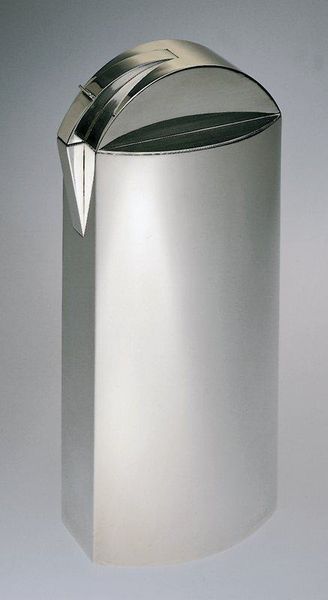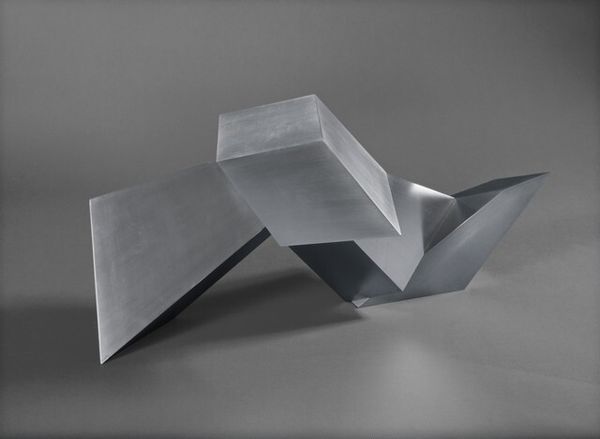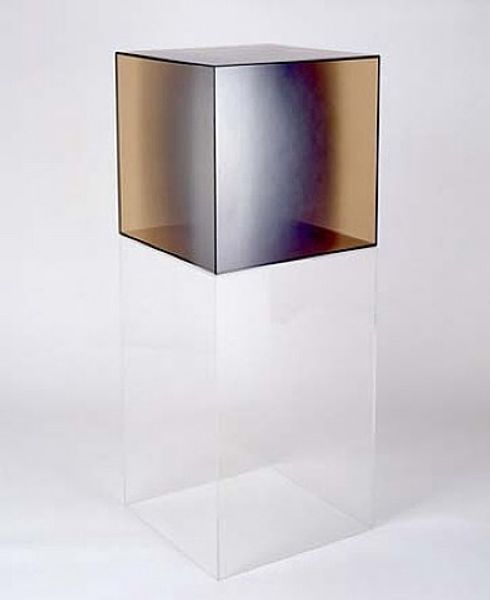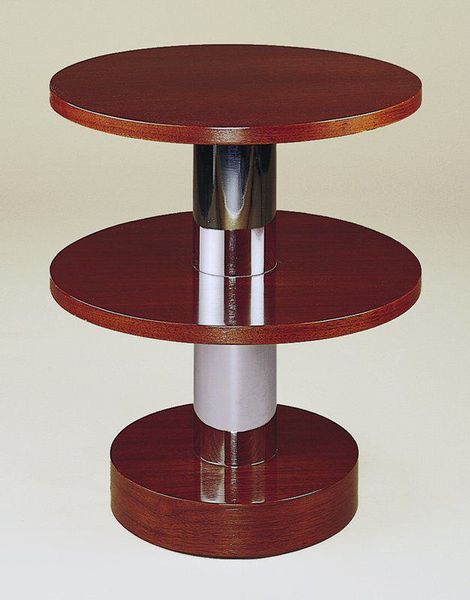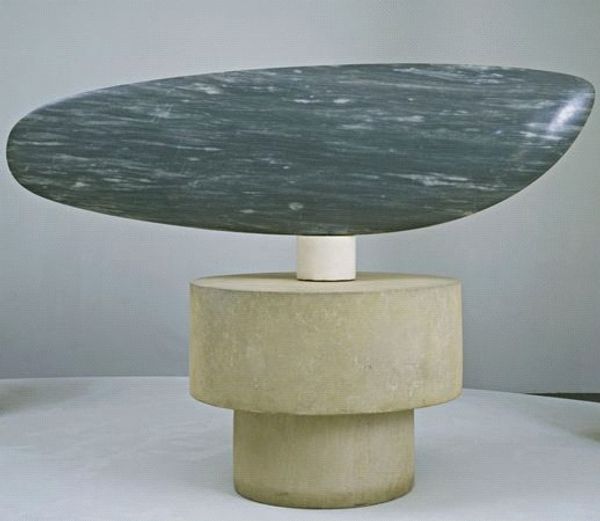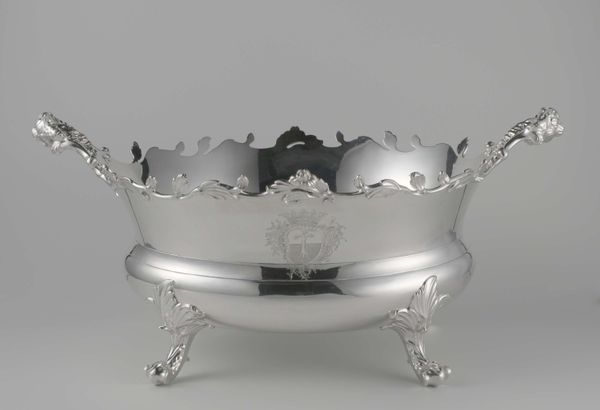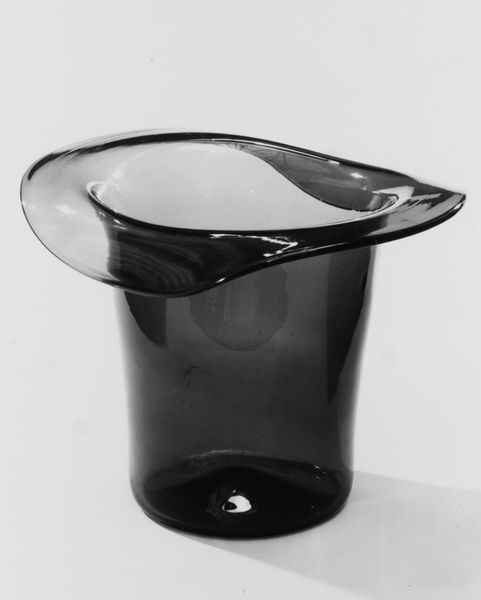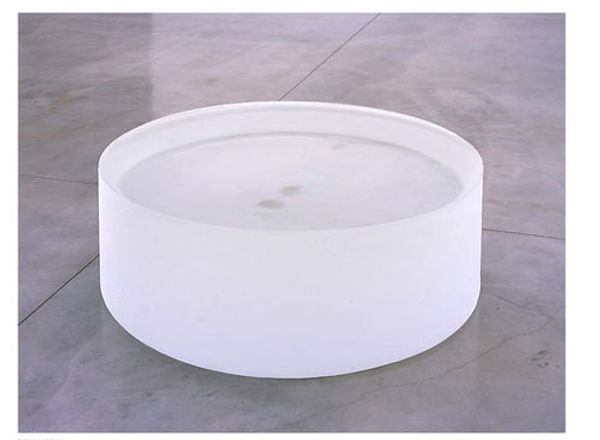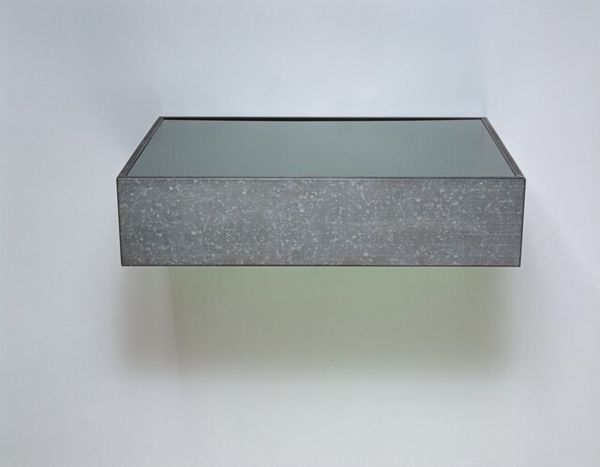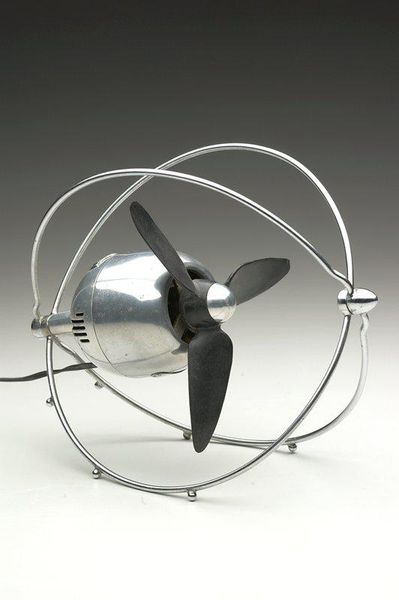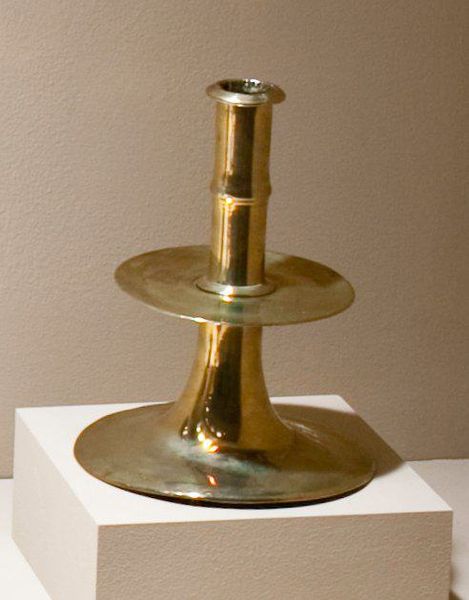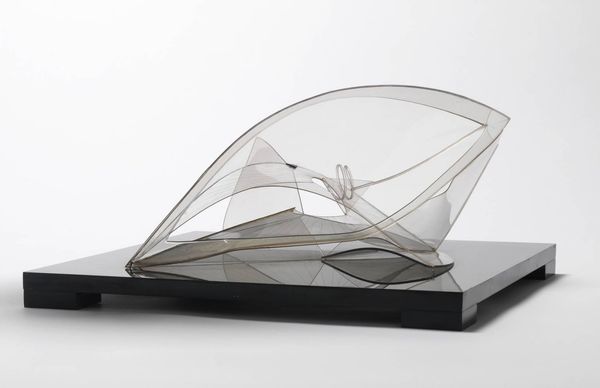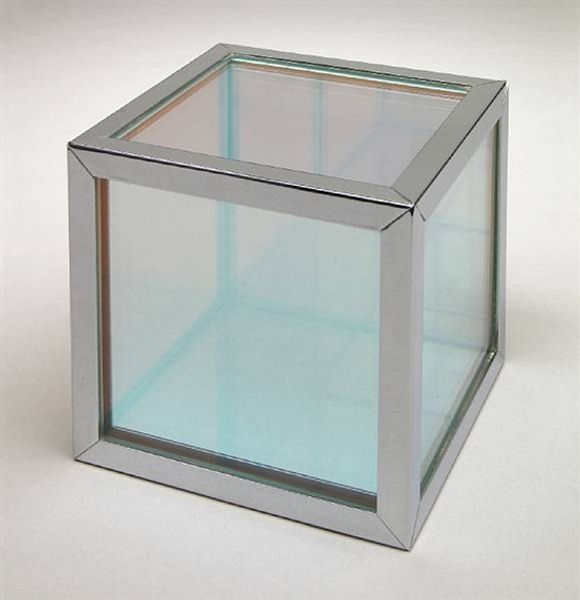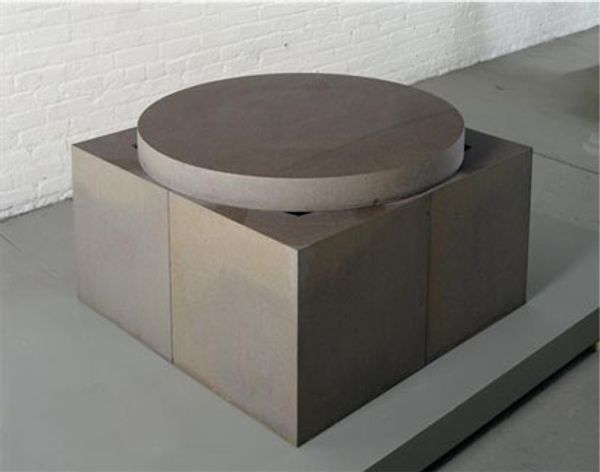
Copyright: Pol Bury,Fair Use
Curator: Here we have Pol Bury’s "12 triangles concaves," created in 1990. It's a mesmerizing sculpture, often installed as a fountain. What's your immediate take on it? Editor: Well, there's an interesting tension at play. The geometry feels so cool and calculated, almost sterile. But then, there’s the movement of the water, bringing in life, an almost playful element that counteracts that initial austerity. Curator: I see what you mean. The geometry anchors it in modernist principles, but the reflecting surfaces evoke ever-changing mandalas, particularly how repeating geometrical shapes can serve meditative purposes in some Eastern traditions. Do you see connections there? Editor: Perhaps indirectly. For me, knowing Bury was part of the kinetic art movement changes everything. It becomes less about pure form and more about how perception shifts with movement, a dance between stability and instability. And given it's a fountain, the flow transforms something hard, like metal, into something yielding, even vulnerable. Curator: The use of stainless steel is key, too. Its reflective quality blends the sculpture into its environment. It takes on the colors of the sky, trees… and us, the viewers! Is there commentary about who or what can define art and meaning, by mirroring ourselves back to us? Editor: Precisely! Also, the "concave" part of the title highlights the way negative space shapes our reading of it. The water flows out from these absences. Are we meant to fill those voids somehow? Does that reflect societal imbalances in any way? Who decides how voids are filled? Curator: That brings a vital political charge to the piece, reflecting Bury’s history growing up under political upheaval. He turned away from painting after seeing war horrors and started making what he considered anti-monumental sculpture...perhaps questioning hierarchies by integrating fluidity into inflexible materials. Editor: It makes me think of the social movements that use disruption to expose underlying power structures. The water—constant, disruptive— becomes a visual metaphor for ongoing resistance. Curator: This gives an even richer understanding of Bury's process! We see an artist embedding layers of symbolism, prompting contemplation on the relationship of shape to flux. Editor: Definitely. And recognizing those layers pushes the conversation further—art history becomes a launching pad, not an end point.
